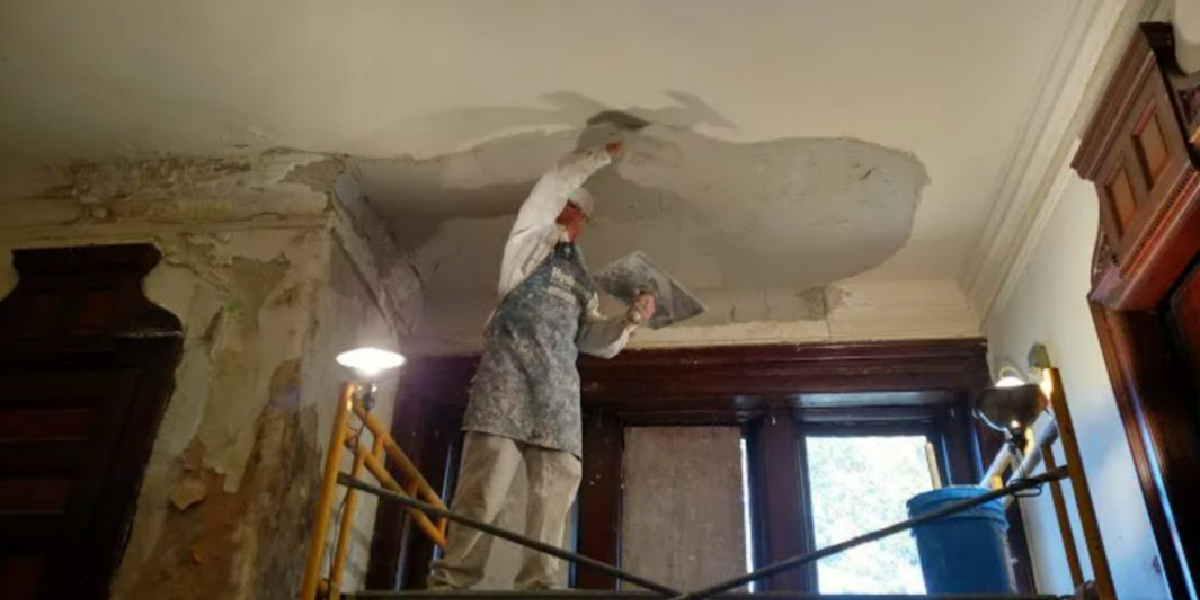Why Do Plaster Problems Need Professional Repair?
Plaster can help identify growing issues around a house since most problems will manifest in the plaster first.
Plaster is a porous material that readily absorbs moisture, which may come from various sources, such as leaks in the roof or wall or poor ventilation that leads to high humidity.
Diagnosing plaster problems early will help prevent further damage to the walls and roofs or the house’s structure.
Table of Contents
Common Plaster Problems
In this new article, you will find some of the most common plaster problems to know and how to deal with them.
Cracking plaster
Plaster cracks commonly occur in older buildings. The most common causes include movement, changes in humidity and temperature, or poor workmanship during the original plastering.
There are two common types of cracking plaster:
- Hairline cracks
- Stair-step or settlement cracks.
Hairline cracks are thin, small cracks caused by natural material shrinkage or settling of the building.
While these cracks create a cosmetic fault, they rarely pose a structural threat. If they don’t spread, leave them alone.
However, a professional plaster repair service can assess the extent of the cracking and determine the best course of action.
Settlement cracks typically converge to a problematic point, resembling stairs.
The most common sources of these cracks include soil settling, changes in moisture levels, and freeze-thaw cycles that shift the underlying structure.
Stair step cracks can indicate deeper structural problems and require an evaluation by a construction professional before getting fixed by painters.
Peeling or flaking plaster
Plaster can peel or flake for a few reasons, such as moisture infiltration, structural issues, or poor workmanship during the initial application of the plaster.
The best solution depends on the underlying cause of the problem.
For moisture problems, address its source, repair it, and allow the plaster to dry.
In most cases, fixing the moisture issue and repainting the affected surface with a stain-blocking primer solves the plaster problem.
If the problem points to structural issues, such as a settling foundation or shifting walls, a professional must address them before repairing the plaster.
Plaster can bulge and flake off the lath for a while before it falls off, pointing to significant issues behind it.
It is advisable to hire a professional to remove and replace incorrectly-installed plaster.
You Should Also Read: Repairing Damaged Plaster: DIY or Call a Professional?
Discoloration
Plaster can gain a tint from exposure to moisture or light, mold or mildew growth, and exposure to chemicals or pollutants in the air.
To address discoloration, identify the source of the problem first.
Then, the affected areas may require specialized cleaning, repairs, or painting. In some cases, removing and replacing the discolored plaster only fixes the cosmetic issue temporarily and prolongs the problem.
Choose expert plaster services
Professional painters in Northern Virginia have the knowledge and tools to diagnose and fix plaster problems.
They will take care of the underlying problem or refer to the proper service to do so and restore the plaster to its original condition.
Additionally, a professional plaster repair will be more durable and long-lasting than a DIY fix.
Benjamin Painters offers residential and commercial painting for Northern Virginia. Exterior and interior painting, including priming, sealing, plaster & drywall service, pressure washing and much more.
We are licensed and insured. Call us at 703-303-4197



0 Comments